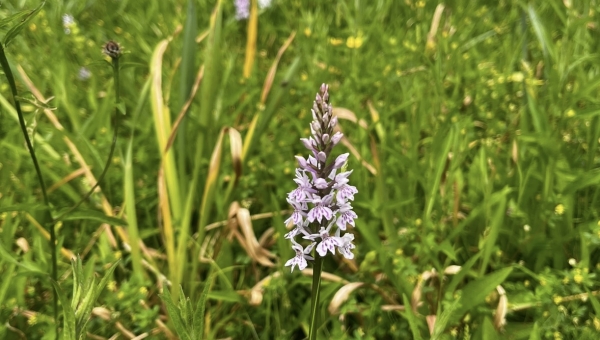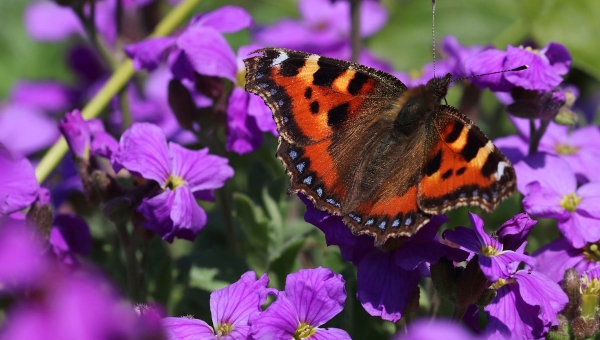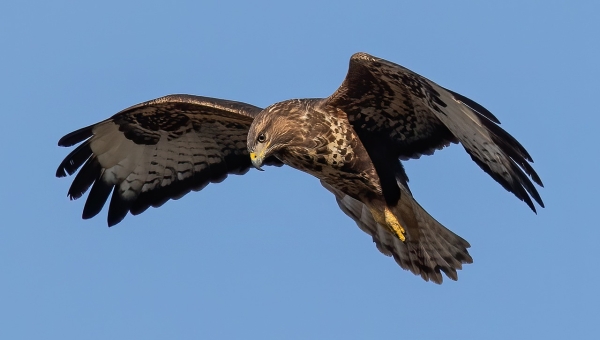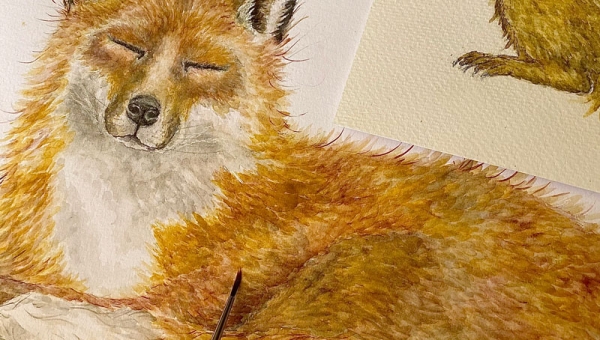
Exploring the Enchanting World of UK Wild Orchids
Orchids are among the most captivating flowers in the natural world, and the United Kingdom is home to a variety of wild orchids; each bringing their own charm to our ecosystems. Whether you are a seasoned botanist or a curious nature enthusiast, these wild orchids offer a glimpse into the rich biodiversity of the UK’s flora.
Let us delve into some of the most fascinating wild orchids you might meet or have met, including the Common Spotted Orchid, Early Purple Orchid, Green-winged Orchid, and lastly, the Pyramidal Orchid.
Common Spotted Orchid (Dactylorhiza fuchsii)
The Common Spotted Orchid is one of the most widespread and recognizable wild orchids in the UK. Found in a range of habitats from woodlands and meadows to heathlands and grasslands. The plant can be distinguished by its delicate, pinkish-purple flowers with distinctive rich dark green leaves with darker spots. Blooming from late spring to early summer, this orchid typically forms dense clusters of flowers on a tall, slender stem. Its adaptability to various environments and its striking appearance makes it a favourite among wildflower enthusiasts.
Early Purple Orchid (Orchis mascula)
As one of the earliest orchids to bloom in the UK, the Early Purple Orchid is a delightful sight in spring. Its vibrant purple flowers, often tinged with pink, appear in loose clusters atop a tall stem. This orchid thrives in woodlands, particularly in areas with dappled sunlight, such as clearings and open tracks. The Early Purple Orchid is known for its pleasant fragrance and its role in attracting early pollinators like butterflies and bees. Its early appearance is a sure sign that spring has truly arrived.
Green-winged Orchid (Anacamptis morio)
The Green-winged Orchid is a striking and less common species, renowned for its unique and intricate flower structure. Its blooms are greenish or purplish and feature distinctive, wing-like appendages. Found in a range of habitats, from meadows and grasslands to coastal cliffs, the Green-winged Orchid flowers in late spring. Its eye-catching appearance and the subtle green hue of its wings make it a standout in any wildflower patch.
Pyramidal Orchid (Anacamptis pyramidalis)
True to its name, the Pyramidal Orchid has a distinct, pyramid-shaped cluster of flowers. Its blooms, which can vary from pink to purple, are arranged into a dense, cone-like formation. This creates a dramatic visual effect for the plant. This orchid prefers well-drained soils in open grasslands, meadows, and calcareous soils. Flowering from late spring to early summer, the Pyramidal Orchid’s striking appearance and growth habit make it an exciting find for wildflower watchers.
Other Notable Wild Orchids
- Bee Orchid (Ophrys apifera): Named for its intriguing flower structure that mimics the appearance of a bee, the Bee Orchid is a fascinating species. Found in calcareous grasslands and meadows, it blooms in late spring and early summer. Its unique mimicry is a clever adaptation to attract pollinators.
- Lady Orchid (Orchis purpurea): Known for its elegant and elaborate flower clusters that resemble a lady in a ball gown, this orchid is a rare and cherished sight. It typically grows in woodland clearings and calcareous soils, blooming from late spring to early summer.
- Fragrant Orchid (Gymnadenia conopsea): As its name suggests, the Fragrant Orchid is noted for its sweet fragrance. It can be seen in a variety of habitats, including meadows and grasslands. Its delicate, pale pink flowers are arranged in a loose spike, emitting a pleasant scent to attract pollinators.
Conservation and Preservation
Many of these wild orchids are protected by law, and their habitats are often safeguarded by conservation efforts. Orchids can be sensitive to environmental changes, so preserving their natural habitats is crucial for their survival. If you are lucky enough to spot these beautiful plants, it is important to respect their space and avoid disturbing them. Enjoy their beauty, but always remember to leave them as you found them.
Exploring the world of wild orchids in the UK is like stepping into a magical realm of natural artistry. Each species brings its own unique story and beauty to the landscape, offering endless opportunities for discovery and appreciation. Whether you are trekking through woodlands or strolling across meadows, keep an eye out for these enchanting blooms and let them inspire your love for the natural world.

It is widely known how important wildlife is in England and how communities must work together to protect green spaces. This doesn’t necessarily mean going above and beyond, but being able to make small life changes and understanding the importance of keystone species can be a significant step in helping to make a difference.
Across the UK, there are a number of keystone species that are being reintroduced to the UK after extinction. In the southeast of England, this includes European bison and the European pine marten, and in the near future, red squirrels will make a comeback to our woodlands. The gradual reintroductions that are happening across the UK highlight the importance and urgency of information being shared about these native species and their individual importance to improving biodiversity in the UK.
It is extremely important for the younger generation to be educated about keystone species. In the hopes that becoming more aware will promote interest and conservation efforts to improve the likelihood of a successful reintegration. If successful, each species has a unique purpose; for example, pine martens should help to reduce the high number of grey squirrel populations, which will allow for a successful reintroduction of red squirrels back to UK woodlands. In addition, European bison help by debarking, creating open areas of grasslands. This attracts insects, lizards, and butterflies and improves biodiversity in open areas.
Alongside these important reintroductions, it is important to recognise the wildlife we have in the UK and how we can help attract wildlife to green spaces. There are simple ways to educate ourselves to find out how we can do this. For example, learning about breeding seasons, and one of the longest breeding periods is birds. This season can run anywhere from February to August, and within that time it is important for people to not disturb hedgerows, trees and bushes in case birds are nesting. Although this is widely known, people often forget or simply consider that their hedge would be unlikely to have birds nesting, but in any case, it is always important to check.
Other ways to help keep our wildlife safe can be fun and rewarding. For instance, this could be creating a home for certain types of mammals when it comes to hibernation season. Moreover, this could be a makeshift house, made out of wood or cardboard. As well, it is easy to buy a premade home from a shop, but I’m sure making your own will be more enjoyable. The home can be filled with straw dust or newspaper and placed in your garden, preferably in a corner or in the flower bed so it is hidden. This will hopefully lead to hedgehogs using this as a means of safety or sleep. It may only be a small gesture, but it can be widely appreciated by our wildlife.
Another way to get involved is to build a bug house. This can be made from anything lying around your garden, like twigs, items with holes in, and compost. Creating bug hotels can be a great way of attracting and protecting our insects within our garden. As well, it’s a perfect way to get kids involved by making a bug house and to further educate them on the ways to protect and conserve our insects. Lastly, introducing bird feeders to attract different species can not only be beneficial for the birds’ survival but also exciting. New breeds may appear in your garden each day.
There are, of course other ways to help the environment. One main aspect can be reducing the amount of plastic that you buy and use every day. Luckily there are many eco-friendly methods nowadays. These methods can cut down your plastic consumption and stop it affecting our wildlife and aquatic species. Ways to do this can be simple and very effective. Firstly, use cloth bags when you go food shopping instead of using plastic, as they’re reusable, easy to pack away and a great alternative. Luckily, cloth bags are now sold in most supermarkets over the country, so it’s easy to pick a few up and start reducing your plastic consumption. In addition, you can also use less plastic inside your home by using glass or steel Tupperware/storage. This can drastically lessen the amount you use. As well as practicing reusing products like reusable makeup pads. This can help the industry cut down on mass-producing products which are packaged with plastic.
By learning about keystone species and the reintroductions that are happening across the UK, as well as how we can help common wildlife. These small steps can help improve conservation efforts and protect vital habitats to ensure the survival and success of our UK wildlife.

Increasing Numbers and Its Impact on Wildlife and Ecology
In recent decades, the common buzzard (Buteo buteo) has been making an unprecedented comeback across the British countryside; this is most notable in the Southeast of England. Once a rare sight within my lifetime; buzzards and their familiar call are becoming a familiar presence in rural landscapes, and their rising numbers are beginning to reshape the local ecosystem.
Buzzard Recovery: A Success Story
Historically, buzzards like many other predatory animals were widely persecuted throughout the UK, primarily due to gamekeeping practices in the 19th and early 20th centuries. Coupled with habitat loss and the widespread use of harmful pesticides like DDT in the mid-20th century, buzzard populations faced a steep decline, leaving many parts of southern and eastern England devoid of this once-common bird of prey. DDT, or Dichlorodiphenyltrichloroethane which really slips off the tongue, is a pesticide that accumulates within the food chain in a process called biomagnification. Whilst a rabbit itself may not be impacted if it happens uponsome grass contaminated with DDT, the unlucky rabbit mayin turn find itself being ingested by a buzzard. DDT as a result accumulates within the Buzzards body and interferes with the calcium metabolism process. The overall impact is that DDT effects the Buzzards ability to lay down the necessary layers of calcium in egg formation and produces a brittle, fragile eggprone to breaking during incubation.
However, following the ban on DDT and an overall improvement in wildlife protection laws, including the Wildlife and Countryside Act of 1981, buzzard populations began to recover. The southeast of England, once unsuitable due to habitat destruction and persecution, has now become an increasingly favourable environment for these birds. Today, buzzards are thriving thanks to legal protections, better habitat management, and reduced persecution.
Rising Numbers in the Southeast
Buzzard sightings in the southeast alongside their fellow raptors, once an uncommon event, are now routine. In counties such as Kent, Surrey, Hampshire, and Sussex, populations have surged, with buzzards frequently observed soaring over fields, and swooping through the treeline when disturbed. According to surveys conducted by the British Trust for Ornithology (BTO), the buzzard population has steadily increased over the past few decades, becoming one of the most numerous raptors in the UK. Estimates suggest that the UK buzzard population now numbers around 70,000 breeding pairs, with the southeast representing one of the regions with the most significant recent growth.
Ecological Impact of Buzzard Resurgence
While buzzards are a top predator, their impact on the southeast’s wildlife and ecology is complex. As generalist feeders, buzzards have a varied diet that includes small mammals (particularly rabbits and voles), birds, reptiles, carrion, and invertebrates. Their role as predators and scavengers helps maintain a balance within the ecosystem, but their rising numbers have prompted discussions about their effects on wildlife and agricultural landscapes.
Conversely, some conservationists worry that buzzards could deplete certain species of small mammals, which are essential prey for other raptors and predators.
Potential Challenges and Conservation Management
The growing number of buzzards in southeast England has sparked some concerns, particularly among farmers and gamekeepers. While the bird is protected by law, there have been calls for careful management, especially where buzzards are perceived to threaten livestock (such as young lambs) or game birds such as pheasants and partridge. This ties in with themes identified in the article surrounding the reintroduction of small predatory mammals such as the pine marten.
To address these concerns, wildlife management bodies like Natural England have granted limited licenses to control buzzard populations in specific cases, though such measures are rare and highly regulated. Overall, most evidence suggests that buzzards are not a significant threat to livestock or game birds when compared to other factors, such as disease or climate change.
Looking Forward: Buzzards and a Balanced Ecosystem
The resurgence of buzzards in the southeast of England is a remarkable example when, given breathing space, nature tends to restore a natural balance. Their presence is a reminder of the importance of top predators in maintaining healthy ecosystems. As natural regulators of small mammal populations and efficient scavengers, buzzards play a vital ecological role that benefits both wildlife and agriculture.
However, as buzzard numbers continue to grow, it will be important to monitor their impact on other species and the broader ecosystem. Striking a balance between conserving these majestic birds and addressing the concerns of farmers and conservationists will require ongoing research and a collaborative approach.
In conclusion, the increase in buzzard numbers in southeast England is a testament to successful conservation efforts and habitat recovery. Their presence is enriching the region’s biodiversity, though it also presents new challenges that must be carefully managed. With thoughtful planning, buzzards can continue to soar as a symbol of wildlife restoration while coexisting with the needs of both people and nature.

Unit 9, Honeycrest Industrial Estate,
Lodge Road, Staplehurst,
Kent TN12 0RX

